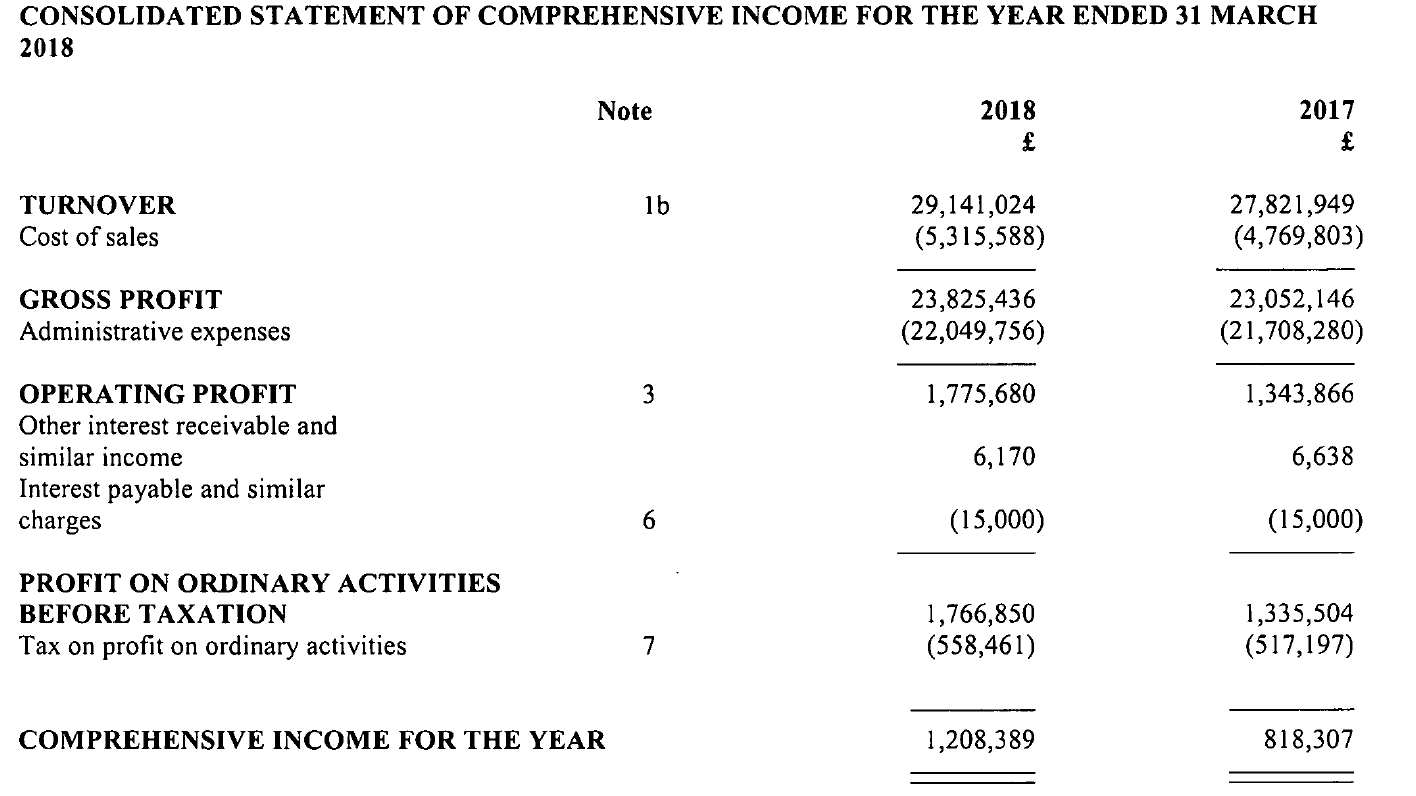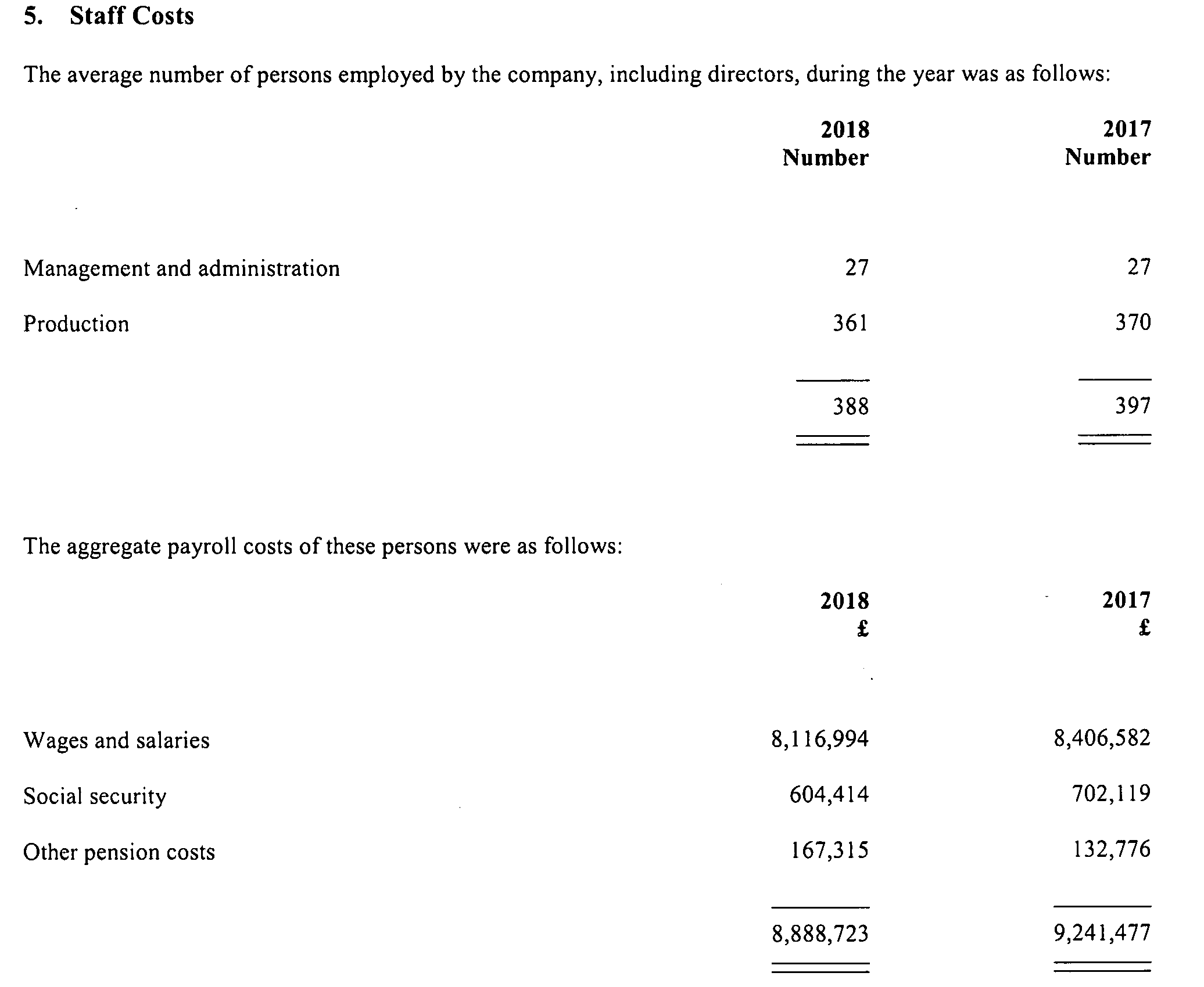While rumours are circulating that the Flamingo Land Planning Application to develop much of Balloch may be withdrawn and replaced by a number of separate applications, officially the Loch Lomond and Trossachs National Park Authority have suspended the Planning Process since August while awaiting information from the applicant (see here). That hardly tallies with the Forestry Commission for Scotland submitting a response on 11th December (see below) which suggests that work is secretly going on behind the scenes. Meantime, the consolidated accounts of the Flamingo Land group for the financial year to 31st March 2018 were published last week on the Companies House website (see here), appearing a few days after the official publication date (this is quite normal).
Flamingo Land’s latest accounts and Scottish Enterprise funding
The overall financial position of Flamingo Land and how it operates appears to have changed very little since the 2016-17 financial year (see here). In terms of our current economic system, Flamingo Land is a sound successful company:

Both turnover and profits have increased and the company pays corporation tax on this. Its a very different type of company to Natural Retreats which operated Cairngorm Mountain Ltd and there continues to be significant investment in the business, including preparatory work for the proposed developments at Balloch.

While this extract rather reinforces the view that Flamingo Land’s experience and expertise lies in operating theme parks rather than developments appropriate for a National Park, the bigger question is why when Flamingo Land is so profitable and able to fund investment has Scottish Enterprise contributed £116,549 towards progressing the Planning Application (see here)? What Flamingo Land’s accounts show is that there is absolutely no need for Scottish Enterprise to assist them in this way. Nor, whether you agree with selling off public land or not, is there any justification for doing so on the cheap (£200k has been mentioned). Scottish Enterprise is using public money to help Flaming Land become even more profitable and their owners even richer. That is wrong and the money could be far better spent.
Flamingo Land’s latest accounts again show most of the benefit from the business goes to the owners and Directors rather than the rest of the workforce. At first sight the fees to the four Directors, especifically that of the highest paid director, reduced last year:


The reduction however only partially offsets the c£250k increase in the salary of the highest Director from the year before. Moreover that Director, who appears to be Gordon Gibb, also benefits from the £235k dividend paid to himself and V.Gibb, the other shareholder. On top of this the Directors may have benefitted from the interest on a loan (£218,910 at year end) they made to the company:
 Contrast the Directors’ and owners’ financial rewards with those of the workforce. Despite turnover increasing, the number of full time employees reduced:
Contrast the Directors’ and owners’ financial rewards with those of the workforce. Despite turnover increasing, the number of full time employees reduced:

By deducting the emoluments of the Directors from the total pay you can work out the wages and salaries shared by the other 384 staff – the 99% near enough:
£8,888,723 – £1,248,270 = £7,640,453 divided by 384 = £19,897 on average
This compares with last year:
£9,241,477 – £1,301,285 = £7,940,222 divided by 393 = £20,204 on average
Despite inflation and increases in the minimum wage, the average wage of the rest of the workforce has reduced in the course of the year.
Part of the explanation for this may be that there continues to be no recognised Trade Union:

Implicit here is that the interests of the employees are not the same as the owners. This is not a co-operative venture in any sense. Once again the company donated £25k to the Conservative Party. The latest accounts would appear to confirm what I claimed last year, that if the Flamingo Land development goes ahead the main “benefit” to local people will be yet more low paid jobs.
The consequences of Flamingo Land for Balloch
The succinct response to the Planning Application from Forestry Commission Scotland, referred to above, provides evidence from another arm of government about the consequences of Flamingo Land going ahead/ 4.34 hectares of woodland will be lost across the site:
11th December
Dear Planning Support
2018/0133/PPP
Land At Pier Road, Ben Lomond Way And Old Luss Road, Known As West Riverside And Woodbank House, Balloch.
FCS notes that this proposed development is located within woodland and the proposal commits to appropriate compensatory planting to offset the loss of trees under the building footprint and working areas. The EIA Report predicts the total loss of 0.75 ha LEPO [Long established woods of planted origin]; 2.73ha broadleaved semi-natural woodland and 0.86 ha broadleaved plantation woodland which equates to 4.34 ha woodland loss across the site. The proposed locations for compensatory planting are not provided within the application and are to be determined on a phase on phase basis at detailed design stage. FCS recommends that this proposal should be considered within the scope of the Scottish Government’s Control of Woodland Removal policy and further information on the compensatory planting proposals is required to determine the overall impact of the proposal and ensure that all woodland loss is mitigated. The proposed measures for protecting and retaining existing woodland within the development are also noted
Kind Regards
So, there you have it, Flamingo Land’s claims that the woodland would be enhanced by dozens of chalets, ropewalks through the trees etc have been completely contradicted by the Scottish Government’s own agency, FCS. While noting the proposals to retain woodland within the development, In their expert view, the proposals developments will destroy 4.34 hectare of woodland at Balloch. This is why they state that the developer will need to produce compensatory planting proposals elsewhere.
The proposal for compensatory planting rather misses the point. As part of the housing development on FCS’ own site at Balmaha last year (a site on the Ancient Woodland Inventory) they agreed to compensatory planting on their land…………in the Trossachs! A fat lot of good that would be to people living in and visiting Balloch and it seems unlikely that Flamingo Land will be able to create 4.34 hectares of new woodland in the 16 or so remained hectares of the site. The point here is that far from Flamingo Land being a green development, it will destroy green space currently enjoyed by residents and visitors to Balloch alike. That is something the LLTNPA was set up to protect.
It is something that Scottish Enterprise is funding a rich and successful private company, or rather the 1%, to destroy.
The gulf between Scottish Government rhetoric (the importance of green spaces, the need for woodland, community empowerment, the concerned noises about inequality) and practice is yawning.
Good work; thanks for this.
Definitely worth re-stating the benefit to the community of this development (or not). Ross Greer MSP is reporting that Flamingo Land has committed to gaining Living Wage certification (https://greens.scot/ross-greer-msp/loch-lomond) which would certainly increase salaries beyond the minimum wage they pay most of their English staff, but where’s the evidence of this?
Thank you for your efforts and sharing this information with the wider public. It is clear to me that Scottish Enterprise have some vested interest in Flamingo Land going ahead, but that absolutely cannot happen.